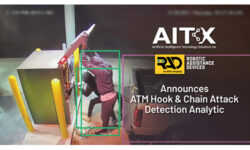Avoiding Large Problems in Large-Scale Retail Retrofits
Proper planning can help prevent large-scale retail retrofit hazards.

With frequent advancements in technology and systems being refreshed in favor of large-scale IP-based analytic solutions, many large retailers face the task of managing these upgrades without interrupting the core revenue stream. Challenges include nonstandard work hours, complex scheduling, managing multiple contractors, equipment logistics, staging, and IT resources for advanced remote programming.
As with any installation, planning is the key component to a successful deployment. Retrofitting a large national retailer requires the support of more than corporate security. With today’s systems requiring interoperability into existing customer point-of-sale (POS) platforms, planning approval by the IT team is critical. In many cases, retailers may require hundreds or thousands of CCTV, intrusion, electronic article surveillance, and/or access control systems to be updated simultaneously using system specialty teams. This may add extra layers to an already complex process. Even if a large in-house installation force of employees is on hand, not everyone can be used. A leadership role must be assumed by the most qualified person, someone who is available to manage the project separately from day-to-day normal business.
Prepare for Contractor & Customer Issues
In order to meet the demands of a large project deployment and still support an existing client base, additional help is a must. That includes enlisting licensed integration subcontractors, which represents a unique set of challenges. Since subcontractors do not work directly for you, and are not readily aware of specific needs and expectations, specialized training will be required. Regardless of prior installation knowledge of the product, details about both you and your customer’s needs are necessary. If a new product is being installed that may be unfamiliar to the subcontractors you are using specific training is crucial and time sensitive. Plus, knowing how to train subcontractors – who are usually located all over the county – could be time consuming and expensive.
Additionally, there are challenges on the customer side. From the start, understand all of the customer’s expectations, while obtaining the correct documentation to proceed. Determine who will be making decisions for unexpected situations so as to alleviate unnecessary costs that increase budget.
If additional hardware is being deployed to the site that requires an IP address, make sure the IT team is involved from the beginning. Knowing the equipment and how it communicates will help when deploying on the network. Develop a plan that fits the business’ standards and requirements, which may only take a few phone calls to understand the network environment. Work through the IT change management system to implement and test any changes needed.
Know Everything About Site Conditions
Conducting a site survey is also critical. If all of the retailer’s locations are identical, this ideally simplifies the process. Knowing specifics like ceiling height and type are important to the system planning and installation. Key questions to answer include: are there existing cable paths that can be used; does the site need a permit to pull new cable, and does it need to be in a conduit; is the location a union site; is there power where needed or is an electrician needed before the installation starts; are there repairs needed prior to work beginning?
If you are adding to an existing system, determine the current condition of that system. If a video recorder is being exchanged, for example, the ideal scenario would be to avoid replacing numerous cameras that the customer thought were working, but it turns out were offline.
Having the right supplies at hand is vital to keep the job running smoothly and on budget, especially if you are working during overnight hours. Spend time upfront and create a detailed list of all of the parts that will be needed, including spares.
Planning, scheduling and documenting can determine the successful outcome of the installation. Being scattered and unorganized will add unnecessary time and travel expenses that hinder a job and reduce profitability. Spend the time to map out the project in advance and create detailed scope and expectations. By taking a small group of locations, you can easily test the plan and evaluate what worked and what didn’t work. This will allow you to refine for better success going forward.
If you enjoyed this article and want to receive more valuable industry content like this, click here to sign up for our FREE digital newsletters!

Security Is Our Business, Too
For professionals who recommend, buy and install all types of electronic security equipment, a free subscription to Commercial Integrator + Security Sales & Integration is like having a consultant on call. You’ll find an ideal balance of technology and business coverage, with installation tips and techniques for products and updates on how to add to your bottom line.
A FREE subscription to the top resource for security and integration industry will prove to be invaluable.








